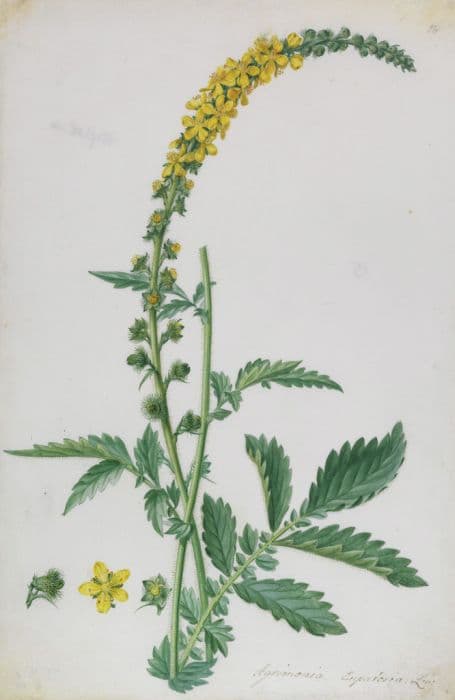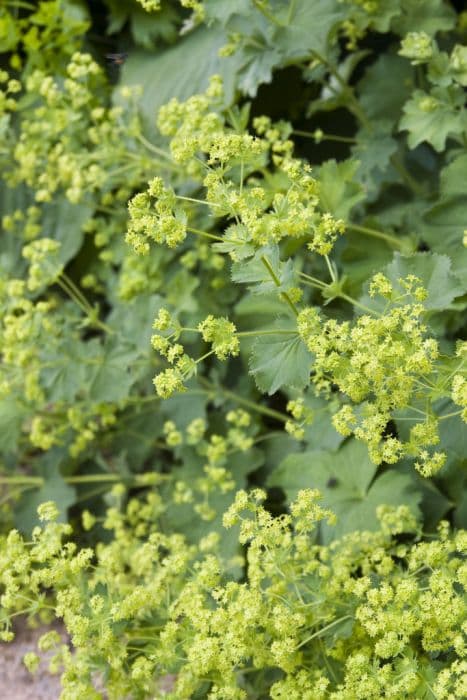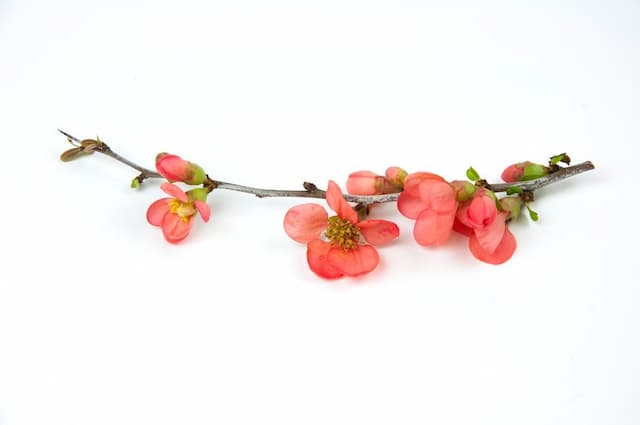Sargent Cherry Prunus sargentii

ABOUT
The Sargent cherry is a visually striking plant known for its ornate features. It exhibits an elegant branching habit, creating a pleasing silhouette even during the winter months when it is devoid of leaves. In the spring, the tree becomes a focal point with its profusion of vibrant pink flowers that appear in clusters. Each flower is composed of five petals that attract pollinators and signify the arrival of warmer weather. Following the flowering season, the tree's foliage transforms, with leaves that emerge in a reddish-copper tone. As the leaves mature, they change to a lush green, offering a dense canopy that provides ample shade. The foliage of the Sargent cherry is ovate with serrated edges, giving each leaf a textured appearance. As summer transitions into autumn, the leaves offer a final visual treat by turning into a tapestry of colors ranging from rich oranges to brilliant reds, making it a standout among the autumnal landscape. The tree also bears small, round fruits that ripen to a dark red or black color. These cherries, while not commonly consumed by humans, serve as a food source for various birds and wildlife. The bark is an additional feature of interest; it is glossy and has a reddish-brown coloration with prominent horizontal lenticels. This bark becomes increasingly furrowed and scaly with age, adding to the tree's aesthetic appeal and textural contrast in the landscape.
About this plant
 Names
NamesSynonyms
Sargent's Cherry, Sargent Cherry, Ezo Mountain Cherry, North Japanese Hill Cherry.
Common names
Prunus sargentii.
 Toxicity
ToxicityTo humans
Prunus sargentii, commonly known as Sargent cherry, is not generally considered toxic to humans. However, like many plants in the Prunus genus, it is possible that parts of the Sargent cherry, especially the seeds, leaves, and stems, contain compounds that can be harmful if ingested in large quantities. The seeds contain amygdalin, which can be converted into cyanide when ingested. Symptoms of cyanide poisoning from consuming large amounts of seeds may include headache, dizziness, shortness of breath, nausea, and in extreme cases, seizures, coma, and even death. While casual contact or ingestion of the fruit flesh in moderate amounts is generally safe, it is advisable to avoid consuming the seeds and other potentially toxic parts of the plant.
To pets
Prunus sargentii, commonly known as Sargent cherry, may be toxic to pets if they consume certain parts of the plant. The seeds, leaves, and stems of the plant can contain amygdalin, a cyanogenic glycoside that can release cyanide when metabolized. If a pet ingests a significant amount of these parts of the Sargent cherry, symptoms of cyanide poisoning may occur. These can include vomiting, diarrhea, abdominal pain, difficulty breathing, lethargy, convulsions, and in severe cases, respiratory failure and death. It is crucial to prevent pets from consuming the seeds or chewing on the leaves and stems of this plant. If ingestion occurs, immediate veterinary attention is essential.
 Characteristics
CharacteristicsLife cycle
Perennials
Foliage type
Deciduous
Color of leaves
Green
Flower color
Pink
Height
20-30 feet (6-9 meters)
Spread
15-25 feet (4.5-7.5 meters)
Plant type
Tree
Hardiness zones
4-7
Native area
Japan
Benefits
 General Benefits
General Benefits- Aesthetic Appeal: The Sargent cherry, known for its beautiful pink to deep rose-colored spring blossoms, adds ornamental value to landscapes.
- Seasonal Interest: It offers multi-season interest with spring flowers, green summer foliage, colorful autumn leaves, and attractive bark in winter.
- Wildlife Habitat: The tree provides food in the form of cherries for birds and other wildlife, promoting biodiversity.
- Shade Provider: With its canopy, the Sargent cherry offers shade during hot summer months, making it suitable for parks and large gardens.
- Urban Tolerant: It is tolerant of urban pollution and can thrive in city environments, making it a good choice for street trees or public spaces.
- Erosion Control: The tree's root system helps to stabilize soil and prevent erosion, particularly on slopes or in areas with loose soil.
- Low Maintenance: Once established, Sargent cherry trees require minimal maintenance, with only occasional pruning and watering needed.
 Medical Properties
Medical PropertiesThis plant is not used for medical purposes.
 Air-purifying Qualities
Air-purifying QualitiesThis plant is not specifically known for air purifying qualities.
 Other Uses
Other Uses- Sargent cherry wood is valued for its hardness and grain, making it suitable for furniture craftsmanship and fine woodworking projects.
- The bark of Sargent cherry can be used for ornamental purposes in landscape design, due to its attractive, exfoliating texture.
- The leaves provide a food source for caterpillars of certain moth species, thereby supporting biodiversity.
- Sargent cherry trees can be utilized as bonsai, offering enthusiasts a chance to shape and display the beauty of this cherry in miniature form.
- The dense canopy of Sargent cherry trees offers a habitat for various birds and small mammals, enhancing local ecosystems.
- Twigs and smaller branches of the Sargent cherry can be used as natural chew toys for pet rodents, which help wear down their constantly growing teeth.
- The dried petals of Sargent cherry blossoms can be used in crafts, such as pressed flower art or in homemade potpourri blends.
- During large-scale plantings for reforestation or habitat restoration, Sargent cherry trees serve as pioneer species to prepare the soil for other plants.
- Dense clusters of Sargent cherry can act as a natural windbreak, providing shelter for other plants in landscaped gardens or agricultural fields.
- The vibrant fall foliage of Sargent cherry provides an aesthetic benefit for photographers and artists, who capture its beauty in various forms of media.
Interesting Facts
 Feng Shui
Feng ShuiThe Sargent Cherry is not used in Feng Shui practice.
 Zodiac Sign Compitability
Zodiac Sign CompitabilityThe Sargent Cherry is not used in astrology practice.
 Plant Symbolism
Plant Symbolism- Beauty: Prunus sargentii, commonly known as Sargent's cherry, is renowned for its beautiful and abundant spring blossoms, symbolizing the fleeting nature of beauty and life due to the transitory blossoming period.
- Renewal: The blossoming of the Sargent's cherry signifies the arrival of spring and thus embodies the idea of rebirth or renewal as the plant awakens from its winter dormancy to show new growth and flowers.
- Impermanence: Similar to other cherry blossoms, Sargent's cherry exemplifies the concept of impermanence, or 'mono no aware,' a Japanese term acknowledging the transient nature of things, encouraging appreciation of the fleeting beauty.
 Water
WaterSargent cherry trees require consistent moisture, especially during the first few years after planting. Water these trees deeply once a week, providing about 10-15 gallons of water, to encourage deep root growth. During hot, dry periods, you may need to water twice a week. Ensure that the soil is well-draining to prevent waterlogging. Reduce watering during the fall and winter when the tree is dormant.
 Light
LightSargent cherry prefers full sun conditions, which means it should receive at least six hours of direct sunlight each day. The ideal spot for this tree is in an open landscape where it is not overshadowed by taller trees or buildings, allowing it to bask in unfiltered sunlight for healthy growth and abundant flowering.
 Temperature
TemperatureSargent cherry trees are hardy and can tolerate a range of temperatures. They can survive minimum winter temperatures down to -20°F. The ideal temperature range for robust growth is between 60°F and 75°F during the growing season. Sargent cherry trees can also withstand summer highs up to 85°F.
 Pruning
PruningPrune Sargent cherry trees to maintain their shape, remove any dead or diseased wood, and to encourage healthy growth and flowering. The best time to prune is in late winter or early spring before new growth begins. Pruning should be done annually, though light touch-ups can be done in summer if necessary to correct any structural issues or to remove suckers or water sprouts.
 Cleaning
CleaningAs needed
 Soil
SoilSargent cherry trees prefer well-draining soil with a pH of 6.0 to 7.5. A soil mix of loam, compost, and sand would be ideal to maintain moisture yet prevent waterlogging. Ensuring organic content will support its nutritional needs.
 Repotting
RepottingSargent cherry trees, being large landscape trees, are not typically repotted. Instead, they are planted in a permanent outdoor location where they can grow without transplanting.
 Humidity & Misting
Humidity & MistingSargent cherry trees are adaptable to a wide range of humidity conditions and thrive best in the natural outdoor environment without the need for specific humidity adjustments.
 Suitable locations
Suitable locationsIndoor
Sargent cherry doesn't grow well indoors; it needs full sun and space.
Outdoor
Plant in full sun, provide ample space, and water deeply.
Hardiness zone
4-7 USDA
 Life cycle
Life cyclePrunus sargentii, commonly known as Sargent's Cherry, starts its life cycle as a seed that requires stratification, simulating winter conditions to break dormancy. Upon germination in spring, the seedling develops a root system and shoots, entering the vegetative stage, which includes rapid growth of leaves and stems. After a few years, the plant reaches maturity and begins the reproductive stage, characterized by the flowering phase in early spring, where pink to white blossoms attract pollinators for fertilization. Following successful pollination, the flowers develop into small cherries during the fruiting stage; these fruits contain seeds that are dispersed by birds and other wildlife. In autumn, the plant exhibits a display of vibrant fall foliage before entering dormancy, where metabolic activities slow down as part of the overwintering stage, preparing the plant for the next growth cycle in spring. Throughout its life, the plant undergoes cycles of growth, flowering, fruiting, and dormancy, typically living for several decades if conditions are favorable.
 Propogation
PropogationPropogation time
Spring
The most popular method of propagation for Prunus sargentii, commonly known as the Sargent cherry, is by seed. The best time to sow seeds is in the fall directly after collection; they have a period of cold stratification naturally provided by winter temperatures. Seeds should be planted in a well-draining soil mix at a depth approximately twice the size of the seed. If sowing in spring, it's essential to artificially stratify the seeds by placing them in a moist mix within a sealed container and storing them in the refrigerator at approximately 40 degrees Fahrenheit (4 degrees Celsius) for around 90-120 days to mimic winter conditions. After stratification, the seeds can be planted outdoors or in pots as previously described. Germination can be expected once the outdoor temperatures become consistently warm in the spring to early summer.









